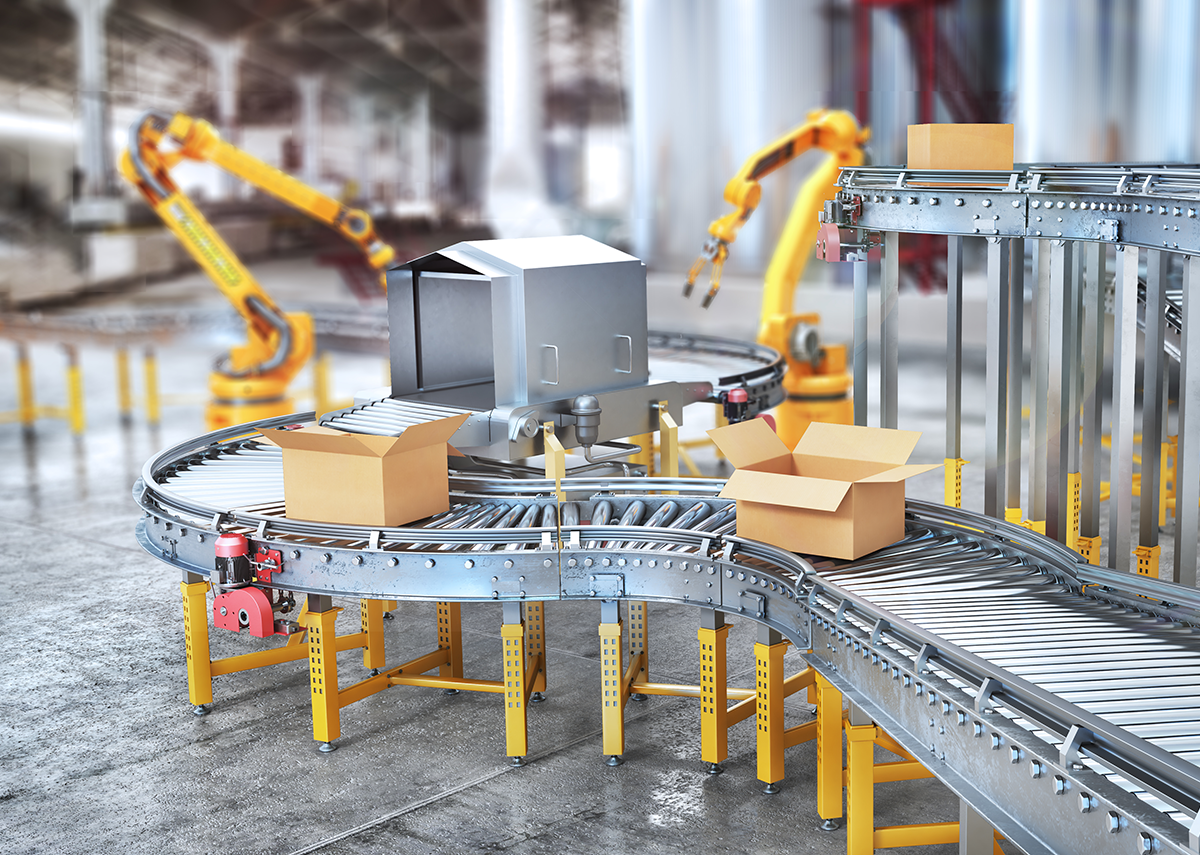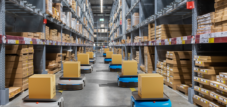Logistics without people?
The megatrends of digitalization, automation and autonomization will also shape logistics processes in the future. Increasingly precise sensors and more powerful software will enable systems that do the work of human specialists in more and more areas. The step towards a camp without people?
Not entirely unlikely, as development is already well advanced. For many people, robots have become an integral part of everyday life. The use of industrial robots has long been standard in the manufacturing industry. Logistics still had some catching up to do here. This is mainly because robots are more or less blind and deaf. It is not that they lack strength, but that they lack human senses. And in order to function smoothly in the warehouse, future generations of robots will have to master these senses.
Gripping objects of different types and properties is still a problem. Nevertheless, robots are being used more and more frequently in warehouses. According to a survey by real estate developer Jones Lang LaSalle among 200 European logistics experts, around 50 percent said they were already using automation technologies in the warehouse. Of these, 55 percent are already using robots.
Robots are changing logistics
And the market continues to move. This is not least due to the strong growth of the logistics industry and the resulting shortage of workers. The higher performance of automated processes in terms of precision, speed and operating time (keyword 24-hour service) is another reason for the trend towards robots.
No question, there is still a long way to go until we have a fully automated warehouse, including automatic delivery to your front door via drone or robot. However, the beginnings of development are already visible. taking over the robotics manufacturer Kiva With these devices, the goods are automatically transported to the picking stations, which saves the staff having to walk. now 13,000 of the units in Amazon's shipping centers .
Picking robots take over the job of warehouse workers
In addition to Amazon's Kiva system, there are a number of other developments that are continually expanding the range of applications for robots in intralogistics:
Fetch and Freight
Fetch Robotics has developed a picking combination of two robots (called Fetch and Freight) . The duo completes their orders independently and steers autonomously through the warehouse on their wheels. The Fetch model takes the desired item from the shelf with its extendable gripper arm. His partner Freight is equipped with a basket into which the goods are placed. Once the basket is filled or the order has been processed, it transports the goods to a picking station.
Toru and Kado
Magazino is pursuing a more advanced approach with its transport robot Toru . Similar to Fetch, it navigates independently through the rows and processes pick lists in order to bring the goods to the picking station after the order has been completed.
Another robot developed by Magazino can be used where a warehouse worker would normally wait to prepare the delivered items for dispatch. This, Kado , corresponds to a picking station, which means that it accepts the delivered goods using a scanner and camera, identifies them and then prepares them for shipping or the next production stage.
The combined use of both devices could make it possible in the future to manage a conventional shelving warehouse without any human labor. But that's not the only place where the use of electronic helpers makes sense: automatic small parts warehouses, shuttle systems or paternoster warehouses can also benefit from the use of the picking station. Because even with these delivery systems, the Kado can be integrated into the removal opening instead of the usual packing station - i.e. exactly where the warehouse worker previously stands.
Baxter
The Baxter, a robotic solution from Rethink Solutions , was specifically designed to work safely with people. In contrast to conventional industrial robots, the Baxter belongs to the generation of cooperative robots (KOBOTs) that interact in close collaboration with humans. Using its sensors and camera technology, it constantly scans its surroundings and slows down as soon as people are nearby.
He also uses his camera eyes to identify and grab objects. Thanks to accurate force sensors and compliant arms, Baxter blends well into a variety of environments. The collaborative system can be flexibly adapted to a wide range of applications: it can stack containers at the picking station or carry out co-packing tasks such as filling boxes with goods.
Exoskeletons: middle ground between humans and machines
In addition to the use of pure robots, there is an interim solution: exoskeletons that mechanically support and relieve people in their work. The Fraunhofer Institute has developed such a skeleton that is suitable for use in logistics.
There are already support structures worn on the body. However, these have so far been relatively heavy and restrict the wearer's freedom of movement. This is exactly where the Fraunhofer Institute comes in. For this purpose, drive modules are integrated into the device on the wearer's elbows and shoulders. These also allow for quick and intuitive movements and allow the user to move freely.
In addition, an external spine relieves the wearer's back. Instead, it cushions the load on the hips or the floor, allowing for an ergonomic working posture. Pressure sensors in the glove are used to determine weight and thus determine the force used by the device. According to the institute, the project will go into practical testing this year and could be ready for the market in around four years.
CONCLUSION
According to experts, the increasing use of robots in intralogistics will increase productivity enormously. In addition, it will influence the location strategy of logistics companies, as the labor cost factor will become significantly less important.
So it no longer seems to be a question of the 'OB', but only to be the 'when' until the robotics will prevail in logistics.
Why Xpert.Plus ?
Xpert.Plus is a project from Xpert.Digital. We have many years of experience in supporting and advising on storage solutions and in logistics optimization, which we bundle in a large network Xpert.Plus
I would be happy to serve as your personal advisor.
You can contact me by filling out the contact form below or simply call me on +49 89 89 674 804 (Munich) .
I'm looking forward to our joint project.
Xpert.Digital – Konrad Wolfenstein
Xpert.Digital is a hub for industry with a focus on digitalization, mechanical engineering, logistics/intralogistics and photovoltaics.
With our 360° business development solution, we support well-known companies from new business to after sales.
Market intelligence, smarketing, marketing automation, content development, PR, mail campaigns, personalized social media and lead nurturing are part of our digital tools.
You can find out more at: www.xpert.digital – www.xpert.solar – www.xpert.plus


